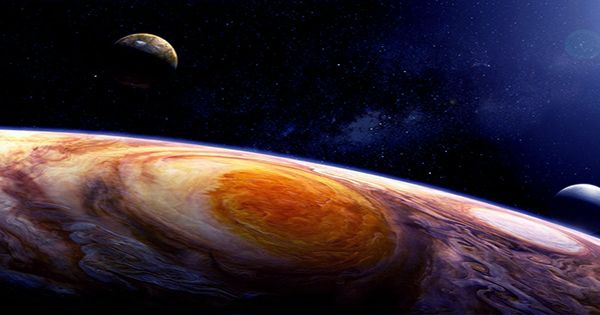The planet Gliese 581c orbits within the Gliese 581 system. It is the system’s second known planet, and the third in order from the star. It is located in the Gliese 581 system, which is only 20 light-years away from Earth (in celestial terms). It is regarded as a super-Earth if its mass is at least 5.5 times that of the Earth.
Gliese 581c piqued astronomers’ interest because it was reported to be the first potentially Earth-like planet in its star’s habitable zone, with a temperature suitable for liquid water on its surface, and hence potentially capable of supporting extremophile types of Earth-like life. However, more research calls the planet’s habitability into question.
It is an exoplanet similar to Neptune that orbits a M-type star. It has a mass of 5.5 Earths, takes 12.9 days to complete one orbit around its star, and is 0.0721 AU away from it. The Gliese 581 system is relatively close to Earth, at 20.37 light-years (193 trillion kilometers; 120 trillion miles) in the direction of the Libra constellation. This distance, together with the declination and right ascension parameters, pinpoints its precise location in the Milky Way.
Discovery
The team published an article on their findings on April 27, 2007, in the journal Astronomy & Astrophysics. It was reported at the time of discovery to be the first potentially Earth-like planet in its star’s habitable zone and the smallest-known extrasolar planet orbiting a main-sequence star, but on 21 April 2009, another planet orbiting Gliese 581, Gliese 581e, with an estimated mass of 1.9 Earth masses, was announced. They also revealed the discovery of another planet in the system, Gliese 581d, in the study, with a minimum mass of 7.7 Earth masses and a semi-major axis of 0.25 astronomical units.

Physical characteristics
- Mass
Gliese 581c’s existence and mass have been determined using the radial velocity method of discovering extrasolar planets. The mass of a planet is determined by the modest periodic movements of the host star Gliese 581 and its planets around a shared center of mass. The minimal mass of the planet is calculated to be 5.5 Earth masses when all six planets are fitted with a Keplerian solution. The radial velocity approach cannot identify the true mass on its own, however it cannot be much larger than this or the system will become dynamically unstable.
Dynamical simulations of the Gliese 581 system that assume the planets’ orbits are coplanar show that the planets cannot surpass 1.6 to 2 times their lowest masses or the planetary system becomes unstable. The upper bound for Gliese 581c is 10.4 Earth masses.
- Radius
There are no radius measurements for Gliese 581c because it has not been spotted in transit. Furthermore, the radial velocity method employed to discover it only places a lower limit on the planet’s mass, implying that theoretical models of planetary radius and structure are restricted in their utility. However, assuming that the planet’s orbit has a random orientation, the true mass is likely to be close to the measured lowest mass.
- Orbit
Gliese 581c has an orbital period (“year”) of 13 Earth days and an orbital radius that is only about 7% that of the Earth, approximately 11 million km, despite the fact that the Earth is 150 million km from the Sun. According to Udry’s team, because the host star is smaller and cooler than the Sun, and hence less bright, this distance positions the planet on the “warm” border of the star’s habitable zone.
The Sun has a radius of 0.00465 AU, while a M0 star of Gliese 581’s age and metallicity has a radius of 0.00128 AU. Because of this close closeness, the primary star should appear 3.75 times broader and 14 times larger in area to an observer on the planet’s surface looking up at the sky than the Sun appears to be from the Earth’s surface.
















